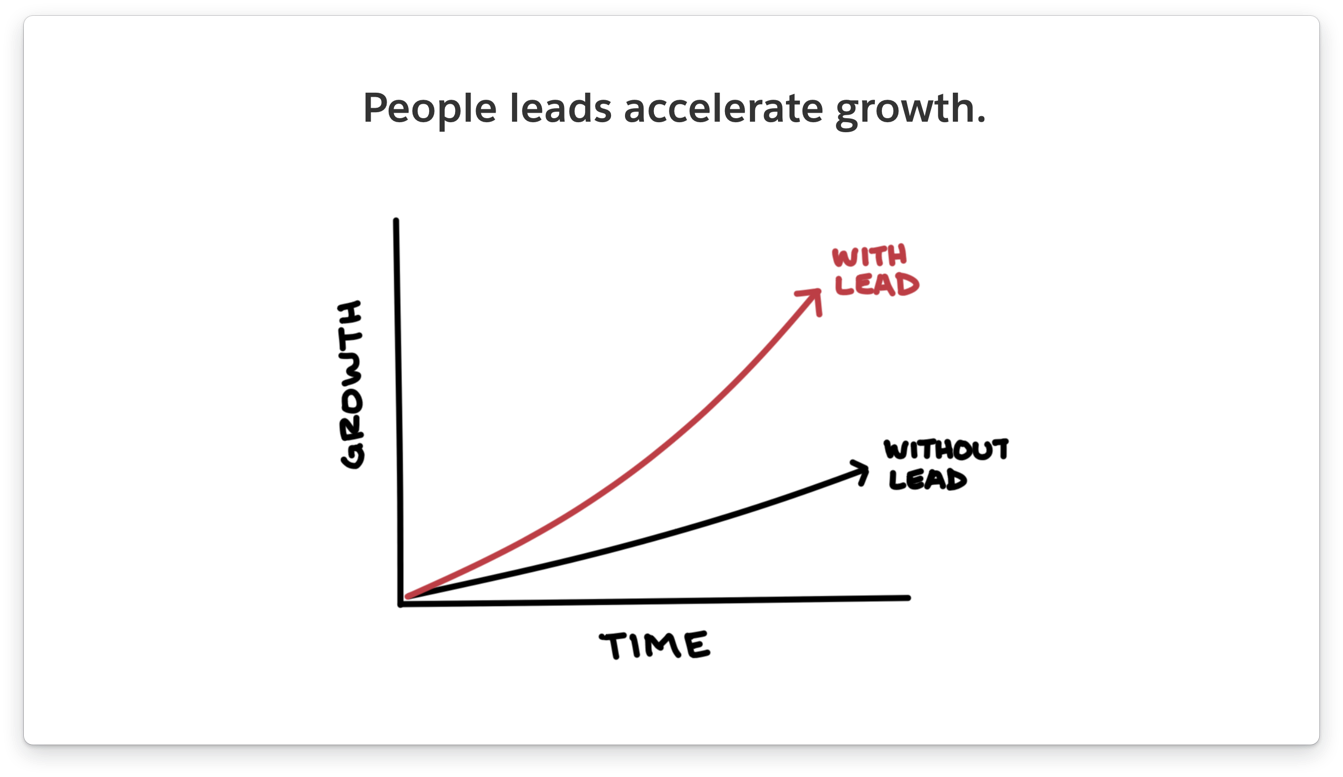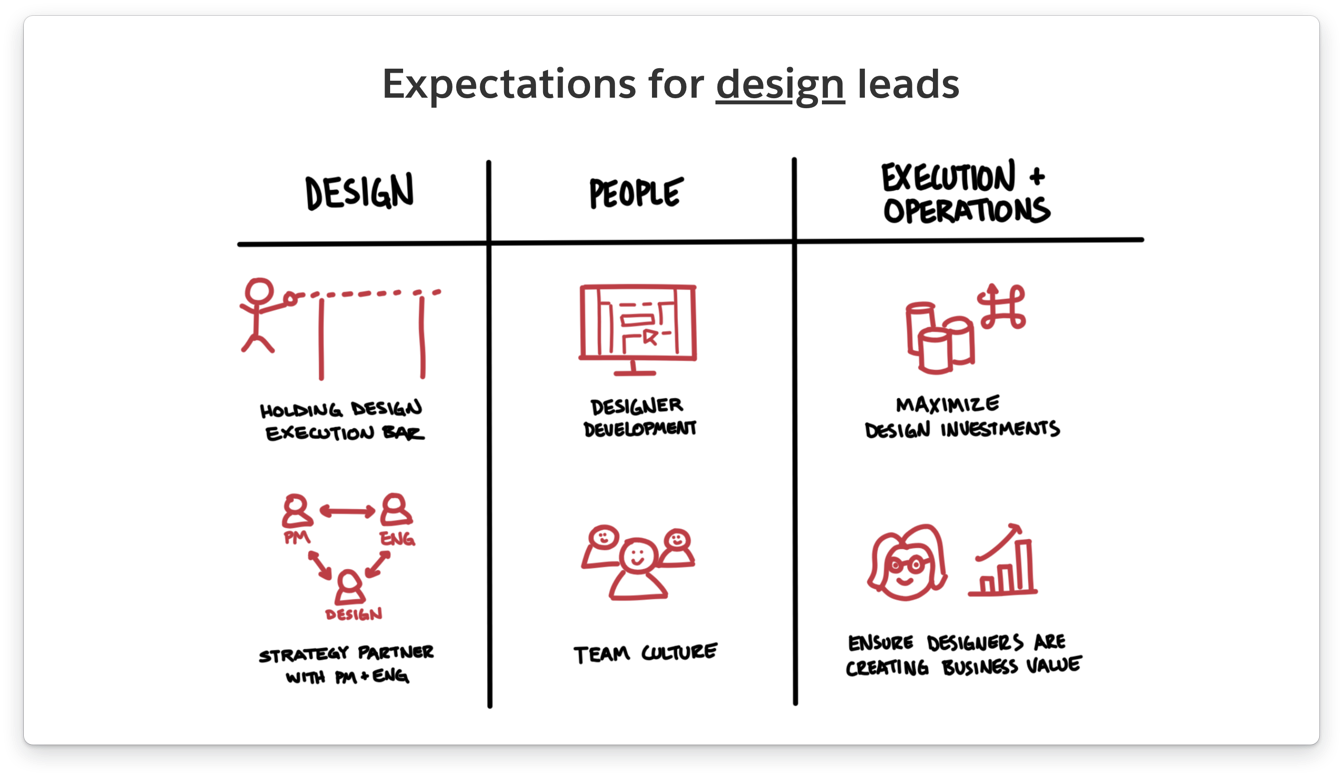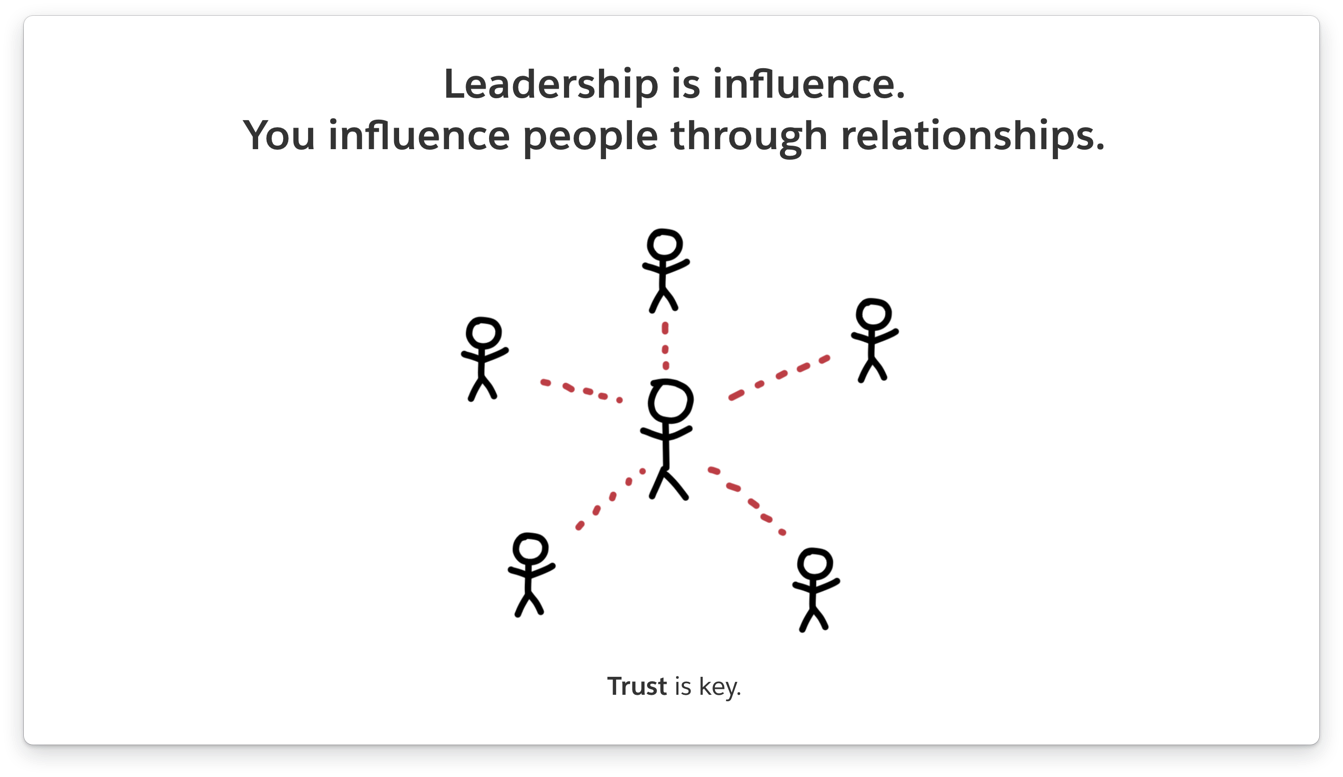Design leadership
After leading designers for over 3 years, I helped train and guide a new class of Design Leads at Palantir. This involved developing materials for a leadership class, which was a joint effort of the design team and people team. It also involved leading two new Design Leads through their first year of people management.

For the leadership class, I created drawings to illustrate key aspects of design leadership. I, along with the Head of Design and another Design Group Lead, delivered this training to the entire design leadership team. The material was sourced from Palantir’s general leadership materials, as well as the design team’s leadership documentation.

These slides reflect key aspects of Palantir’s and my own leadership philosophy. It all begins with the lead’s goal: to help people maximize their impact and growth.

To only do one or the other is ultimately a failure. Only growing the person doesn’t help the business; only growing the business doesn’t help the person.

The net impact of a lead should be that people learn and grow faster. Leads level up their people.

An important point for new leads is to understand how their new role is different. It’s no longer about their individual performance; it’s about their team’s collective effort and success.

Design leads have a unique set of responsibilities. These fall into the buckets of design-specific expertise, personal and team development, and stewardship of business resources.

Leadership is primarily about relationships. It’s about building trusting relationships where you can positively influence those around you.

Leadership is not giving people whatever they want. It involves having hard conversations when what someones wants isn’t what’s best for them or the business.

Trust is at the core of everything a leader does. Without trust, a leader will be ineffective.

I have many more thoughts on leadership and design. The above is a starting point for deeper conversation.